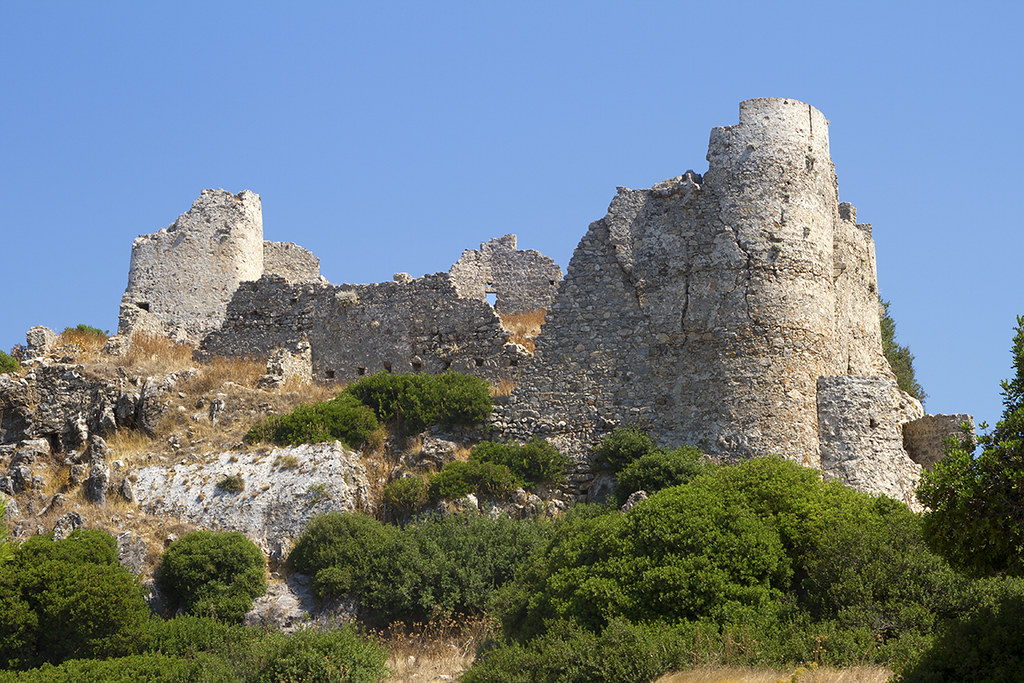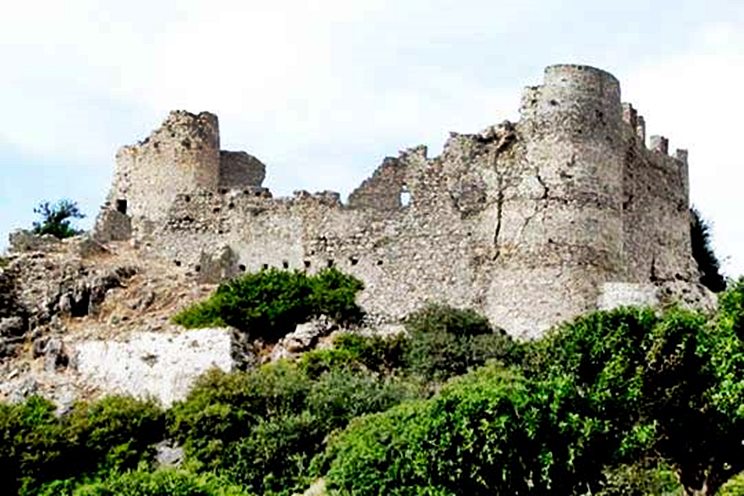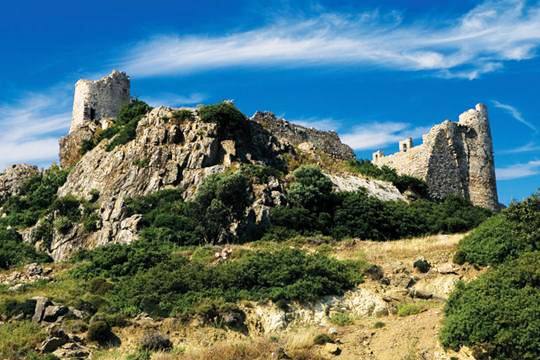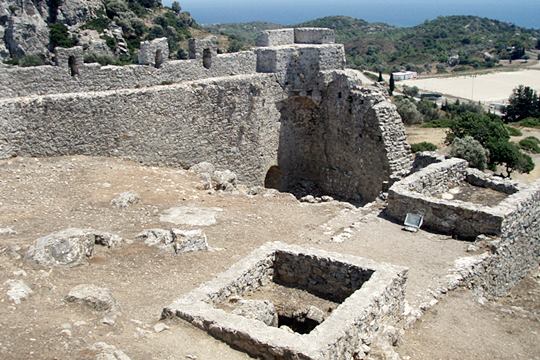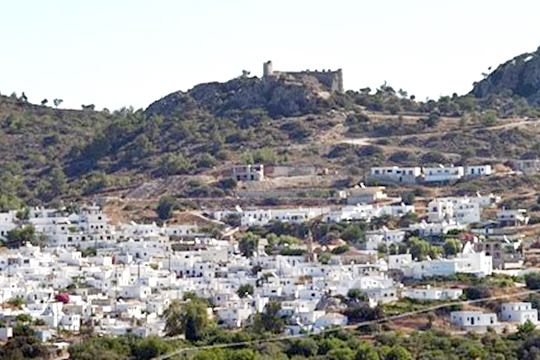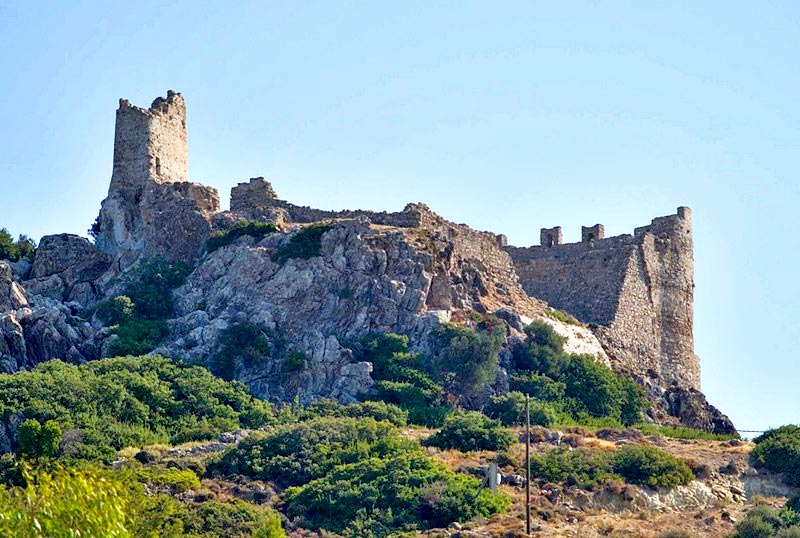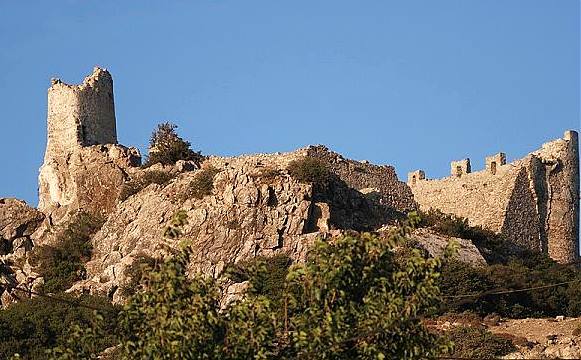Asklipieio, Rhodes, Dodecanese,South Aegean
Castle of Asclipieio
| Location: |
| Asklipieio, Rhodes island |
| Region > Prefecture: | 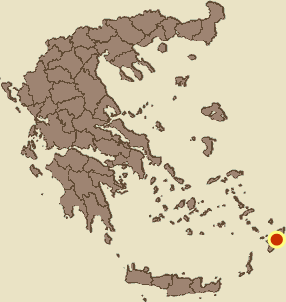 |
| South Aegean Dodecanese | |
| Municipality > Town: | |
| City of Rhodes • Asklipieio | |
| Altitude: | |
|
Elevation ≈ 200 m (Relative Height≈90 m) |
| Time of Construction | Origin | |
| 15th century | IOANNITE |
|
| Castle Type | Condition | |
| Castle |
Average
|
Ruins of a late-medieval Knights Hospitallers’ castle, most probably preceded by a Byzantine castle.
Castle Description
Text: Dr. Michael Losse – Singen (Hohentwiel), Germany (20.12.2020)General description
Asklipieio is located 4 km off the east coast, about 25 km south-west from Lindos. Above the village rises the Knights Hospitallers‘ castle on a partly steep limestone rock. Although large parts of the castle were destroyed and others were freely “reconstructed” during the Italian occupation (1912-43; cf. the photo in Gerola 1914), several medieval phases of construction can be detected at the ruins. However, the history of this castle, whose merlons and other elements distinguish it from other Hospitallers‘ castles on the Dodecanese, is largely unexplored. In the literature it was usually misdescribed, occasionally as a "four-towered" castle.
The castle is characterized by an irregular enceinte with partly “rounded corners”. The enceinte‘s course, on the north and west sides slightly inandling and jumping out, is perhaps an indication for the possible origin in Byzantine times (cf. for example Kastro Feraklos at Charaki, Rhodes). A dry moat protected the castle’s north side.
At the north-western corner rises a small, four-sided tower with plaster residues, which some authors incorrectly refer to as Keep (or in German: “Bergfried“”). As construction joints testify, the tower was placed in a later construction phase on the enceinte’s wall, which forms its outer base. The tower‘s “rounded corner” could testify its origins in the 14th or early 15th century, when such rounded forms were a kind of “fashion” in castle-building in different parts of Europe.
Nothing is known about the use of its small interiors; probably the tower‘s main function was that of a watchtower, because the location of the castle offers wide views. Different fortifications, castles and vigles are visible from here, amongst others the Kastro of Jennádi; Archistrátigos; Vígla next to Váti; Erimókastro near Arnítha; Gérakas next to Profília; Atávyros.
On the south-eastern side of the enceinte, next to the gate, the slightly more strongly formed wall is designed in a bowl-shaped shape as a “round corner”. This corner-structure was provided with a defensive platform, so from outside it gives the impression of a rounded tower.
The gate, a simple portal in the wall, was secured by a box-machicoulation. Above the portal there is an empty niche, in which a relief stone showing a coat of arms was once attached. (A coat of arms of the Knights of St. John, probably from the castle, is exhibited in the local museum in Asklipieio.) As an addition the barbican (with a cistern placed inside) protecting the approach to the gate was added in the later 15th century, as at many other of the Knights Hospitallers‘ castles and fortifications on the Dodecanese.
On parts oft he enceinte later wall reinforcements can be seen, especially next to the tower (originally 0.70 m, south side approx. 1.55 m); on the south side, a talus was added in a later construction phase. Stone-toothings on the tower indicates an unexecuted plan to raise the enceinte’s height.
The interior of the castle is characterised by the large difference in height between the entrance and the upper courtyard (cf. Archangelos castle, Rhodes). In the inner courtyard stood several buildings, of which foundations remained. There is also a large vaulted cistern.
At the castle’s south-western corner, according to the reconstruction of Stephen C. Spiteri (1994), there may have been a “chapel tower” similar to that at the so-called Kritineia castle on Rhodes.
Access (route / entrance)
By car to Asklipieio (parking area next to the main church), from there 10 minutes to walk.
Free access.
History of the castle/tower
Unknown.
Other Info
SourcesBrockman, Eric: The two sieges of Rhodes 1480-1522. London 1969, p. 35.
Flandin, Eugène [Jean-Baptiste Eugène Napoléon]: Voyage à l'île de Rhodes (Le tour monde, 1862, II9). Paris 1862.
Gallas, Klaus: Rhodos. Eine der sonnenreichsten Inseln des Mittelmeeres – ihre Geschichte, Kultur und Landschaft. Köln 1984.
Gerola, Giuseppe: I monumenti medioevali delle 13 Sporadi. In: Annuario Scuola Arch. Atene I, 1914, pp. 319-356, for Asklipieio cf. 328-331.
Kollias, Elias: The castles of the Knights Hospitallers in the Dodecanese Islands. In: Anna Triposkoufi/Amalia Tsitouri (Ed.): Venetians and Knights Hospitallers. Military Architecture Networks (ARCHI-MED Pilot Action) [Hellenic Ministry of Culture, Directorate of Byzantine & Postbyzantine Monuments]. Athens 2002, pp. 165-181.
Losse, Michael: Die Burgen und Festungen des Johanniter-Ritterordens auf Rhódos und in der Ägäis (Griechenland) 1307-1522. (Publisher: Nünnerich-Asmus Verlag) Mainz 2017.
Poutiers, Jean-Christian: Rhodes et ses Chevaliers (1306-1523). Approche historique et archéologique. Imprimerie Catholique sal Araya, Liban 1989.
Spiteri, Stephen C.: Fortresses of the Cross. Hospitaller Military Architecture (1136-1798). Valleta (Malta) 1994, p. 137.
Spiteri, Stephen C.: Fortresses of the Knights. Ħamrun (Malta) 2001, pp. 140-143.
Stefanidou, Alexandra: Castles of the Knights Hospitallers. In: Anna Triposkoufi/Amalia Tsitouri (Ed.): Venetians and Knights Hospitallers. Athens 2002, pp. 184-253.
ΣΤΕΦΑΝΙΔΟΥ, Αλεξάνδρα Στ.:Η Μεσαιωνική Ρόδος. Με βάση το χειρόγραφο και την εικονογράφηση του Johannes Hedenborg (1854). / The Medieval Rhodes. Based on the Manuscript and Illustrations of Johannes Hedenborg (1854). 2004.
| First entry in Kastrologos: | November 2012 | Last update of info and text: | December 2020 | Last addition of photo/video: | December 2020 |
Sources
- Text and photographs 1,8 (2016) by Dr. Michael Losse
- Website ΟΔΥΣΣΕΥΣ - Ministry of Culture, Castle of Asklipio
|
|
| Access |
|---|
| Approach to the monument: |
| By car to Asklipieio (parking area next to the main church), from there 10 minutes to walk. |
| Entrance: |
| Free entrance |



